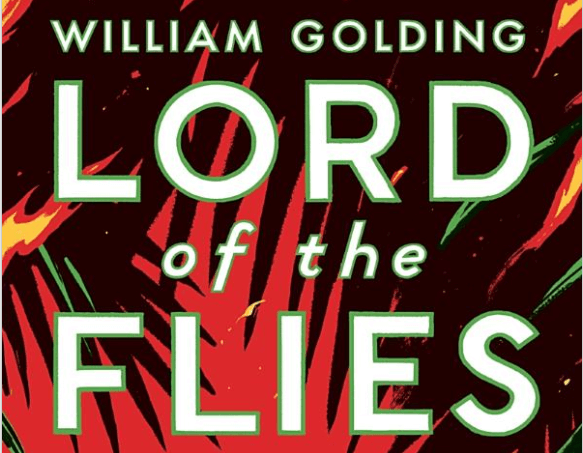"The greatest ideas are the simplest." - Sir William Golding.
It is one of the greatest quotes in the Lord of the Flies.
Have you ever thought about what the world would be without rules, social order, or discipline? Perhaps, savagery in an uncivilized state may be the governing factor. Golding could envision the scenario seven decades back and released Lord of the Flies to hint at how "The world, that understandable and lawful world, was slipping away."
So if Lord of the Flies book has been on your bucket list, this post analyzes insights on this novel to bring out to you the summary, reviews, theme, message, and what it is all about. Stay tuned for a worthy read!
Lord of the Flies: Book Info
Book Name: Lord of the Flies
Originally Published: 17th September 1954
Authors: William Golding
Original Language: English
Genres: Allegorical novel/Young adult fiction/Dystopian fiction/Bildungsroman (coming of age tale)
Lord of the Flies: The Author
Sir William Golding is a British novelist, poet, and playwright born on 19th September 1911 to Alec Golding, a science master, and Mildred Curnoe, a campaigner for female suffrage in Newquay, Cornwall.
Golding worked as an English school teacher in London and taught Philosophy, Greek, and drama for different schools in many cities over the years. It was in 1954 when Golding released his first novel, Lord of the Flies, and later he published 12 volumes of fiction in his
entire life span.
Golding even maintained a personal journal for 22 years from 1971 until the night before he died in 1993, where he used to record all his memories from the past and retrospective thoughts about his novels. The Golding estate gave unprecedented access to Golding's unpublished papers and journals to John Carey, an English Literature professor at Oxford University, who published it in 2009 titled 'William Golding: The Man Who Wrote Lord of the Flies.'
Golding was awarded the Booker Prize in 1980 for Rites of Passage and the Nobel Prize in Literature in 1983. Golding was also knighted in 1988 for his contributions to literature. Instead, The Times ranked him third on its Post-War writers' list of 'The 50 greatest British writers since 1945.'
Lord of the Flies: The Summary
Lord of the Flies summary is a story of a group of young British boys (evacuated during a war and survived a plane crash) who find themselves stranded on a deserted island. Using a conch shell, Ralph calls out to all the boys. They unanimously choose him as their leader to continue with the civilized culture and social order they left behind, accompanied by the intelligent Piggy as his lieutenant.
But another boy, Jack, too, wants to be the leader. His hunger for power took advantage of the boys' fears regarding the beast. So he lured them away from civility to savagery and brutal survivalism of hunters, where they performed evil acts, eventually forgetting their desire for rescue.
Though the boys initially created some rules, order, and an organized system out of respect for their leader displaying civilization, savagery takes place in the absence of adult supervision. Ultimately, they become violent, ruthless, and hard-hearted.
Lord of the Flies: The Review
Lord of the Flies book is an allegorical novel that accentuates the savage nature of humans. Though Ralph, Piggy, and Simon symbolize civility, intellect, and goodness (i.e., the better sides of human nature), ultimately, violence and savagery triumph.
The main message of the plot is that if a society is left without rules, discipline, and order, it devolves and loses its grasp on morality and rationalism, just like the kids.
Lord of the Flies characters are created smartly; where besides the main characters, other characters like Jack (anarchy), Roger (sadism), Percival (family), Maurice (mindlessness), Beast (villains), Littluns (dependence), Lord of the Flies (Beelzebub), Officer (civilized aggression) contribute to the story equally.
Lord of the Flies: E-Book
Golding's style is simple to read and easy to grasp, with short passages and easy language. His use of metaphors and symbols is thoughtful and can be interpreted without mental strain.
After contributing its success to a movie adaptation in 1963 by the same name, the digital copy of the book is also available for avid readers and bibliophiles. Once you get a hold of the Lord of the Flies PDF, you'll find that Golding employs a distant and aloof tone throughout the story, reflecting the way the young boys treat each other.
You'll find that apart from the Lord of the Flies characters, the Conch Shell and the Signal Fire symbols have an essential role. The former denotes government and civilization but loses its essence as the story progresses. Similarly, the Signal Fire was initially lit diligently. But with the story's development, their focus wanes, representing the boys moving farther from civilization, where they eventually lose their will to be rescued.
If you download a PDF book, try to use a proficient PDF viewer like SwifDoo PDF to view and annotate the file easily.

If you have ever purchased or downloaded Lord of the Flies from online ebook stores or any other sources, and are looking for a tool to convert the ebook formats in order to read on a selected device, you must download SwifDoo PDF to have a try.
It offers the most powerful functions for decrypting and converting any ebooks to PDF and ePub.
Lord of the Flies: What Is Lord of the Flies Actually About?
Lord of the Flies is actually about three things, savagery versus civilization, humankind's impact on nature, and the nature of humanity. In fact, Simon dubs the severed pig's head covered in flies as the 'Lord of the Flies,' - an allusion to Beelzebub (the prince of demons) that inspired the book's title.
The book is famous as it symbolizes characters and objects that represent the whole world. The deserted island depicts society and displays the human behavior of civilization and savagery. The pessimistic theme revolves around fear, violence, and hate inherent in human nature, even if placed in a pleasant and peaceful environment.
Lord of the Flies book is an allegory that features characters and objects representing the novel's themes and ideas. Instead, some of the main Lord of the Flies characters are the symbolic significance that makes up our surroundings. For instance, Ralph (the protagonist) denotes democracy and civilization, whereas Jack (the antagonist) denotes dictatorship and savagery. On the other hand, Piggy stands for intellect and rationalism, and Simon (incarnation of Christ) symbolizes saintliness and goodliness.
The novels show how grownups are afraid to even discuss and agree on things, resulting in the young boys being marooned on an island. Had there been no war, the kids would be safe at school.
To Sum Up
Lord of the Flies is the clash of peaceful democracy and violent dictatorship on an island where young boys struggle for survival and rescue. It is an allegory and commentary on society and morality that talks about the difference between an orderly and chaotic world.
But Lord of the Flies book also denotes how the darkness and fears are personified as beasts. There could actually be a beast, but that could only be us! Furthermore, when fear drives and controls the mind, violence, and savagery are bound to happen. So one must create rules and abide by the laws to agree than to hunt and kill. Finally, the book gives you insights into the importance of having regulations and the precarious repercussions of having none.






